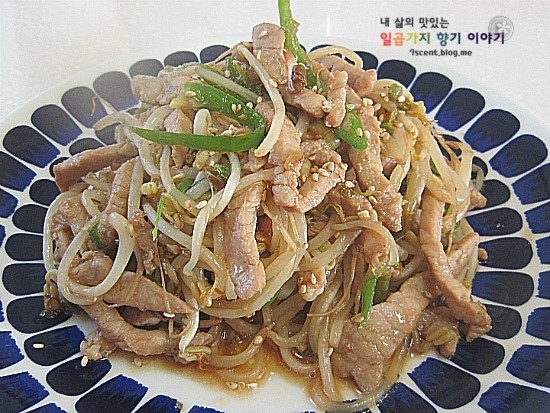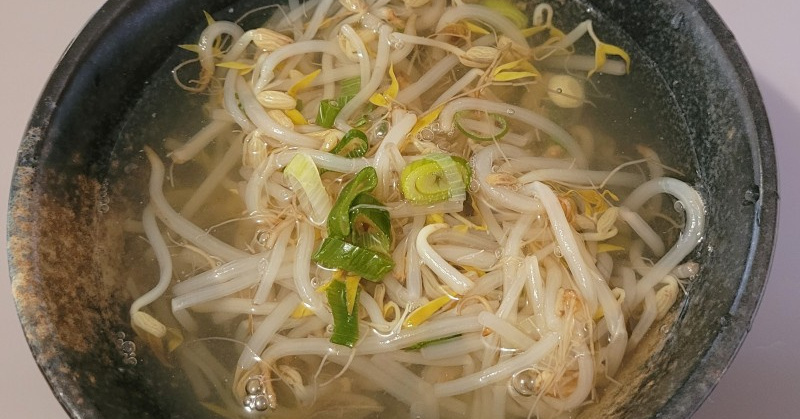Mung bean sprouts, known as "sukju namul" in Korean, are young shoots cultivated by germinating mung beans. They are celebrated for their crisp texture and nutritional richness, making them a staple in Korean cuisine. This article delves into the definition of mung bean sprouts, various culinary applications, and their health benefits.
What Are Mung Bean Sprouts?
Mung bean sprouts are the tender shoots that emerge from germinated mung beans. As the beans sprout, the levels of vitamins A, B, and C increase significantly, enhancing their nutritional profile. Visually, mung bean sprouts resemble soybean sprouts but can be distinguished by their straighter, elongated heads.
Culinary Uses of Mung Bean Sprouts
Mung bean sprouts are versatile and can be incorporated into a variety of dishes, adding a refreshing crunch and subtle flavor. Here are some popular culinary applications:
1. Mung Bean Sprout Salad (Sukju Namul Muchim)
Lightly blanched mung bean sprouts are seasoned with salt, sesame oil, and minced garlic to create a simple yet flavorful side dish that complements many Korean meals.
2. Stir-Fried Mung Bean Sprouts
Stir-frying mung bean sprouts with beef brisket or pork enhances their natural taste. Adding a touch of oyster sauce can elevate the dish's umami flavor.
3. Mung Bean Sprout Soup
Incorporating mung bean sprouts into a broth made from anchovies or kelp results in a light and refreshing soup, often consumed to alleviate hangovers.
4. Mung Bean Sprout Pancakes
Combining mung bean sprouts with pancake batter and pan-frying yields crispy pancakes with a moist interior, offering a delightful textural contrast.
5. Mung Bean Sprout Bibimbap
These sprouts are a common ingredient in bibimbap, a mixed rice dish featuring various vegetables, gochujang (red chili paste), and sesame oil.
6. Mung Bean Sprout Salad
Blanched mung bean sprouts mixed with cucumbers, onions, and bell peppers, then dressed with a tangy vinaigrette, make for a refreshing salad.
7. Mung Bean Sprout Spring Rolls
Adding mung bean sprouts to Vietnamese-style spring rolls introduces a crunchy texture that complements the other fresh ingredients.
To enhance the crisp texture and nutty flavor of mung bean sprouts, consider the following ten tips:
-
Select Fresh Sprouts: Choose mung bean sprouts with firm stems and unwilted leaves to ensure freshness.
-
Thorough Washing: Rinse the sprouts multiple times under running water to remove any impurities and bean husks. Soaking them in water can help the husks float to the surface, making them easier to remove by hand.
-
Blanching in Salted Water: Add 1/2 tablespoon of salt to boiling water and blanch the sprouts for 1–2 minutes. This process enhances their crispness. After blanching, rinse them in cold water to halt the cooking process and cool them down.
-
Adjust Blanching Time: Modify the blanching duration based on the quantity of sprouts. For larger amounts, slightly increase the time, but be cautious not to overcook, as this can soften their texture.
-
Thoroughly Drain Water: After blanching, place the sprouts in a colander to drain excess water completely. Residual moisture can prevent seasonings from adhering properly.
-
Order of Seasoning: Season the sprouts by adding minced garlic, salt, sesame oil, finely chopped green onions, and sesame seeds in that order. Adjust the salt to taste.
-
Use of Sesame or Perilla Oil: Substituting sesame oil with perilla oil can impart a richer, nuttier flavor to the dish.
-
Incorporate Additional Ingredients: Mixing in other vegetables like oyster mushrooms or carrots can provide varied textures and flavors, enhancing the overall dish.
-
Season in Small Batches: Rather than seasoning a large quantity at once, work in smaller batches to ensure even distribution of flavors and maintain the sprouts' crispness.
-
Consume Immediately: Mung bean sprouts are best enjoyed fresh. Prolonged storage can diminish their texture and flavor, so it's advisable to consume them promptly.
Health Benefits of Mung Bean Sprouts
Mung bean sprouts are packed with nutrients that offer numerous health advantages:
-
Rich in Vitamins and Minerals: They contain vitamins A, B1, B2, B6, C, E, as well as iron and calcium, which can help prevent anemia and promote growth.
-
Aids in Weight Management: With a high water content (approximately 96%) and abundant fiber, mung bean sprouts can aid in preventing constipation and support weight loss efforts.
-
Detoxifying Properties: Compounds like flavonoids and vitexin help neutralize free radicals, potentially slowing cellular aging and reducing the risk of chronic diseases.
-
Hangover Relief: The presence of asparagine acid in mung bean sprouts is believed to assist in alleviating hangover symptoms.
-
Promotes Skin Health: The array of vitamins and minerals supports skin vitality and may contribute to a clearer complexion.
Handling and Storage Tips
To maintain the freshness and quality of mung bean sprouts:
-
Preparation: Trim off the root ends and rinse the sprouts thoroughly under running water to remove any impurities.
-
Storage: Submerge the cleaned sprouts in water and store them in the refrigerator. Keeping the temperature between 1–5°C (34–41°F) is ideal, and it's best to consume them within three days for optimal freshness.
Conclusion
Mung bean sprouts are a versatile and nutritious addition to various dishes, offering both culinary delight and health benefits. Incorporating them into your regular diet can enhance meal variety and contribute to overall well-being.
For a visual guide on preparing mung bean sprouts, consider watching the following video:







